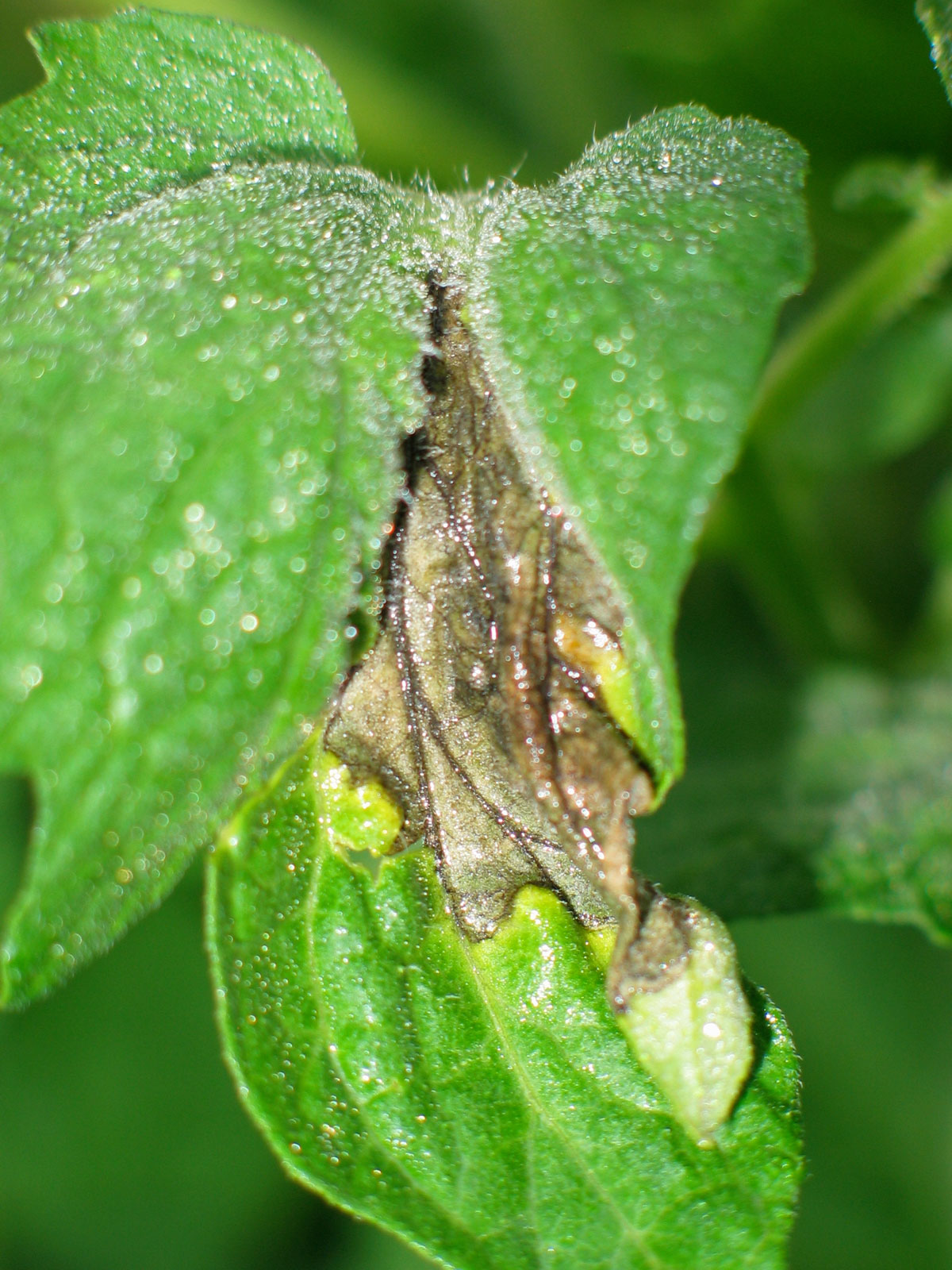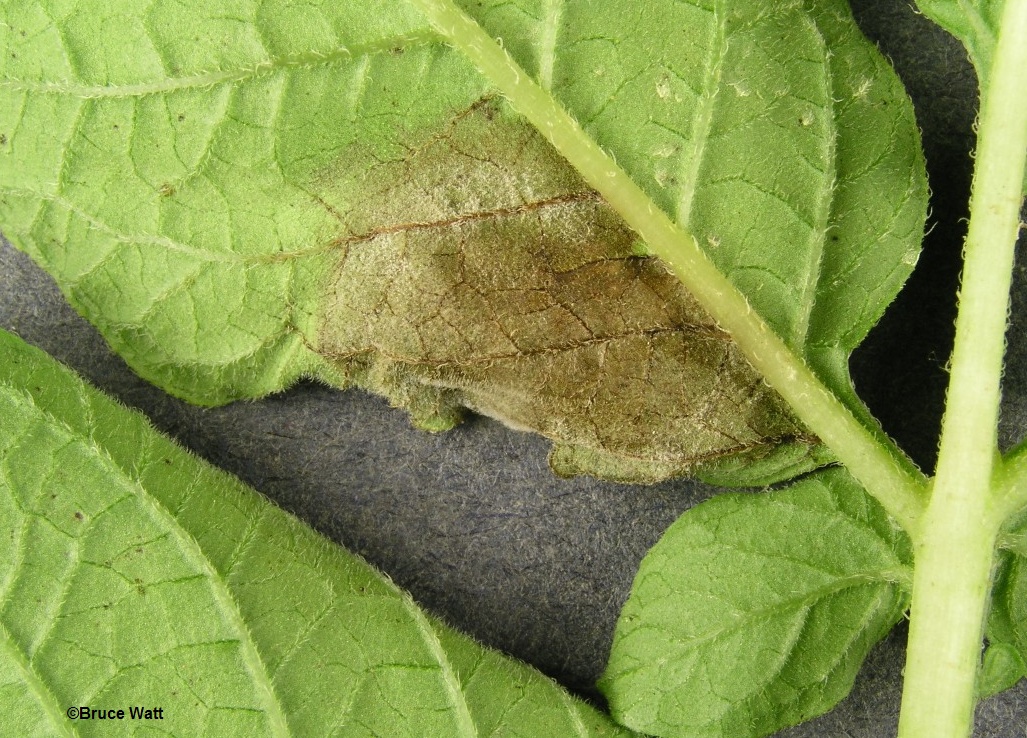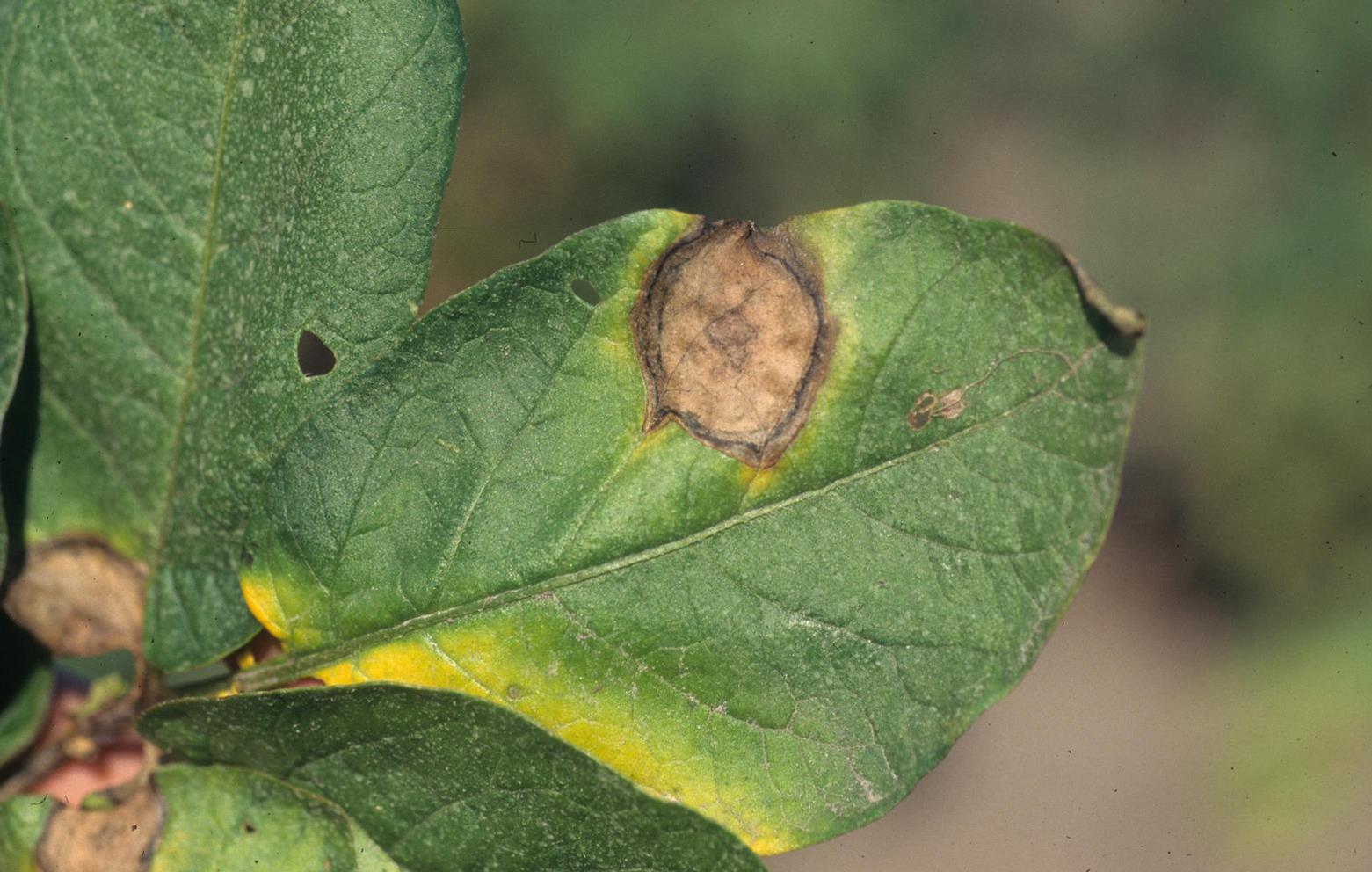

This is where thousands of spores are produced, which can detach from the plant and be carried for miles on air currents.

The pathogen will produce fragile, white growth in the living tissue surrounding the lesion if relative humidity is high. Tissue in the center of the lesion may be completely dead, and may appear wet and slimy. The lesions go right across the leaf veins. Late blight lesions on leaves tend to have rounded edges, often with a lighter border. Staking tomatoes can help keep leaves dry, but if plants are very healthy, humidity can stay high inside the dense canopy. Be sure to scout the bottom of the plant canopy where leaves dry off more slowly. When scouting, always look inside the canopy where leaves stay wet and relative humidity stays high later in the day. Inside dense plant canopies is another place late blight might first appear. In this case it would make sense to focus early season scouting on the stem and base of the plant. Adding to the wet, humid conditions that favor late blight, the irrigation system was leaking at this corner of the field, so the soil was saturated, increasing the relative humidity even more.īecause seed can be the source of disease inoculum in potatoes, the first sign of late blight may be a lesion on the stem that got its start from the infected tuber, and it could occur anywhere in the field. In this field, late blight was first found near the woods, where plants are shaded in the morning, and there is less air movement. Consult with your certifier/inspector before using any product or input in your certified organic operation, and read the article, Can I Use This Input on My Organic Farm?) (Note: If prohibited fungicides were applied the previous year, then the field cannot be used for organic production in the current year. Also think about places in the field where an organic-approved fungicide application may have skipped, like this spot where an aerial application missed near a power line. The first symptoms are often found where environmental conditions are most favorable for infection–such as low spots and edges near woods where plants tend to stay wet longer. When you're scouting a field, it is important to think about where you’re most likely to find early symptoms. When buying tomato transplants, be sure they appear healthy, with no dark spots on the leaves or stem. Cull and volunteer potatoes should be destroyed before green tissue emerges if possible, or scouted for symptoms if it’s not possible to destroy them. (Find your state diagnostic lab at the National Plant Diagnostic Network: Other places for early season scouting include piles of culled potatoes, potatoes surviving in compost piles, or volunteer potato plants growing from tubers left in the ground the prior season–especially if late blight was present in your area. Submit suspect tubers to your state diagnostic lab and avoid planting seed that appears to be infected. Often, other diseases will invade late blight infected tubers, making it difficult to determine if late blight is present. If these lesions are caused by late blight, a shallow cut across the surface of the lesion will reveal a dry, firm, reddish-brown rot. Look for sunken, dark lesions on the surface of the tubers. One of the first places to scout for late blight is in seed potatoes before planting. Late blight epidemics can develop and spread very quickly. When relative humidity levels exceed 90%, hundreds of thousands of spores are produced on infected plants, which can be carried by air currents to infect nearby fields and gardens. Phytophthora infestans, the organism that causes late blight, is known as a water mold, which gives us a hint that late blight is favored by high humidity and wet leaves. It can completely destroy crops in as little as two weeks when conditions are favorable for the pathogen. Late blight is a serious plant disease that affects potato and tomato. Watch this video clip at Transcript of Video: Identifying and Scouting for Late Blight on Organic Farms

Abby Seaman, New York State Integrated Pest Management Program, Cornell University


 0 kommentar(er)
0 kommentar(er)
